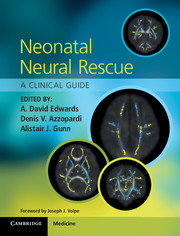Foreword
Published online by Cambridge University Press: 05 March 2013
Summary
Foreword
The overall intent of this book is to elucidate the scientific underpinnings of neonatal neural rescue, especially hypothermia, to synthesize the critical evidence supporting its clinical value and to describe the means of implementation of hypothermia, including important practical considerations. The intent, thus, is ambitious and challenging. The clinical focus is the preservation of neurological structure and function in the infant exposed to perinatal asphyxia. The work was led admirably by three pioneering figures in the field of neural rescue: Professors David Edwards, Denis Azzopardi and Alistair Gunn.
An appropriate query might be raised at the outset – why address an entire book, with more than 20 chapters, to the problem of brain injury secondary to perinatal asphyxia? Some prominent clinicians and the “guidelines” of several scientific societies have stated that perinatal asphyxia with its associated hypoxic–ischaemic brain injury is an uncommon condition. This declaration is decidedly incorrect. The advent of MRI in the study of the newborn with neurological signs referable to the central nervous system has led to the discovery, clearly documented in multiple publications, that the topographic signature of hypoxic–ischaemic brain injury is common in the context of clinical signs consistent with perinatal asphyxia. In developed countries, infants brain-injured by perinatal asphyxia yearly account for cumulative totals measured in the many thousands. Even more dramatically, in underdeveloped countries, the yearly numbers are of the order of a million or more. Thus, the focus of this book, the prevention of hypoxic–ischaemic brain injury related to perinatal asphyxia, is extraordinarily important and timely.
- Type
- Chapter
- Information
- Neonatal Neural RescueA Clinical Guide, pp. ix - xPublisher: Cambridge University PressPrint publication year: 2013



